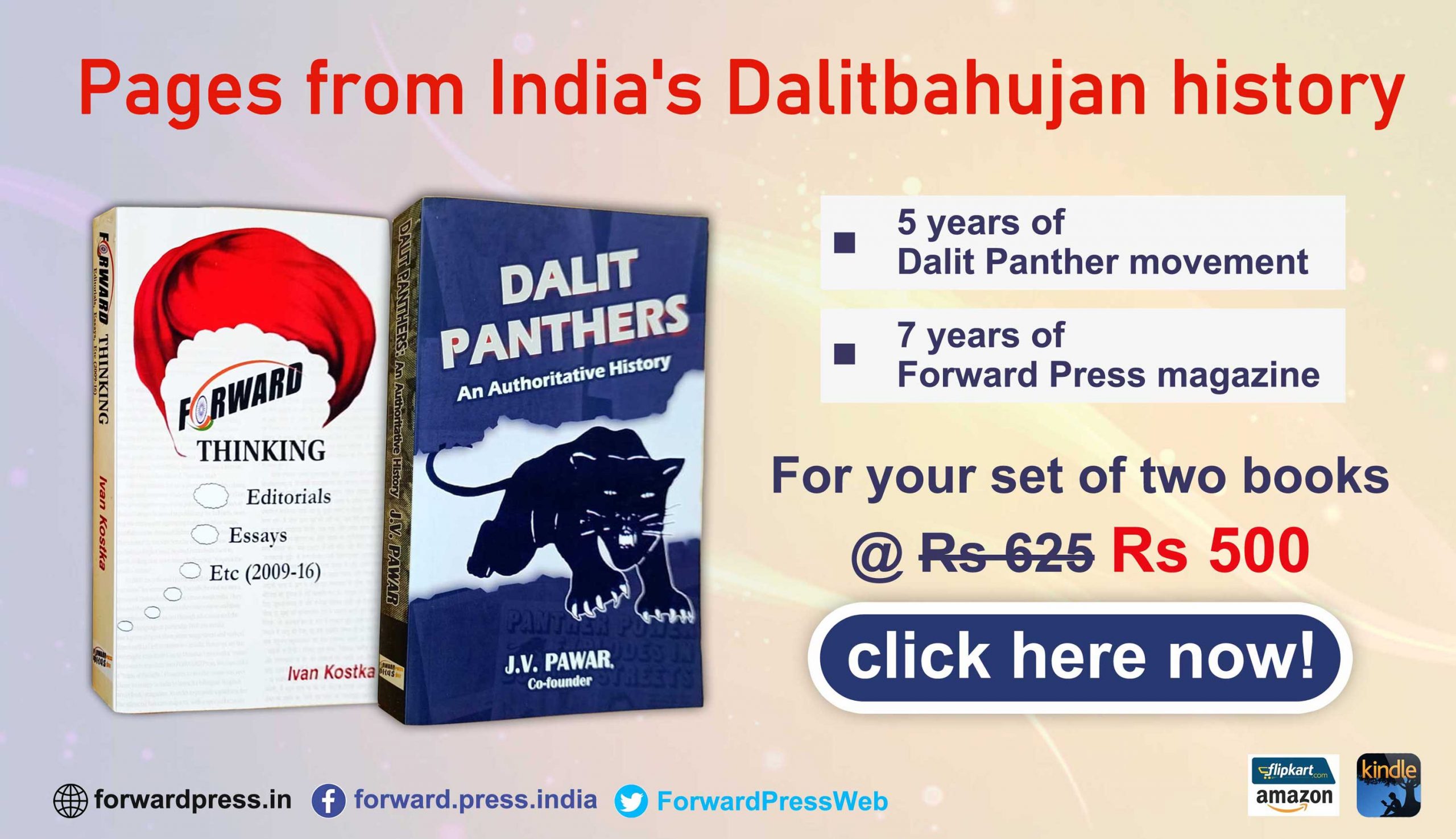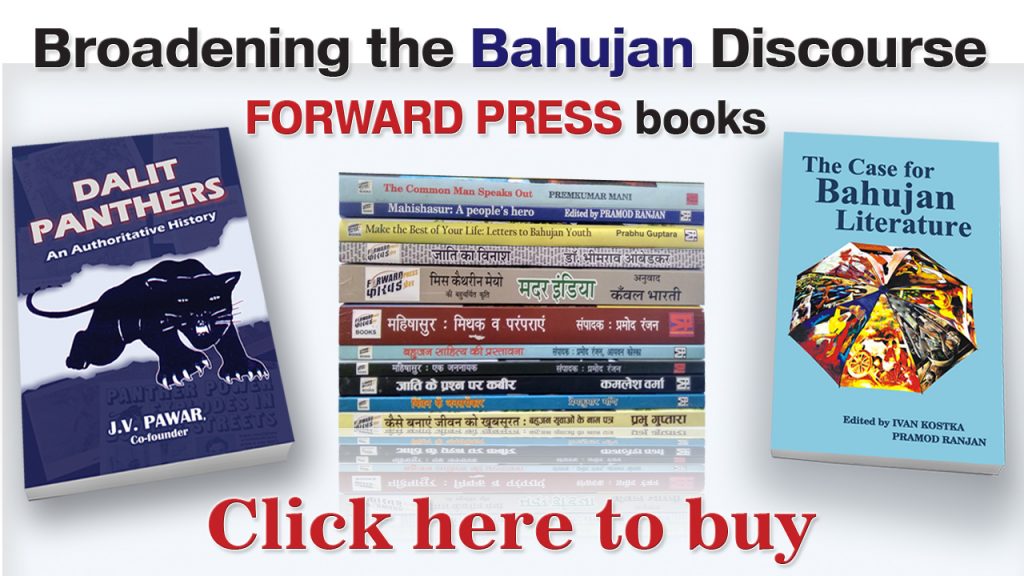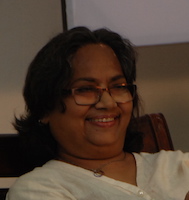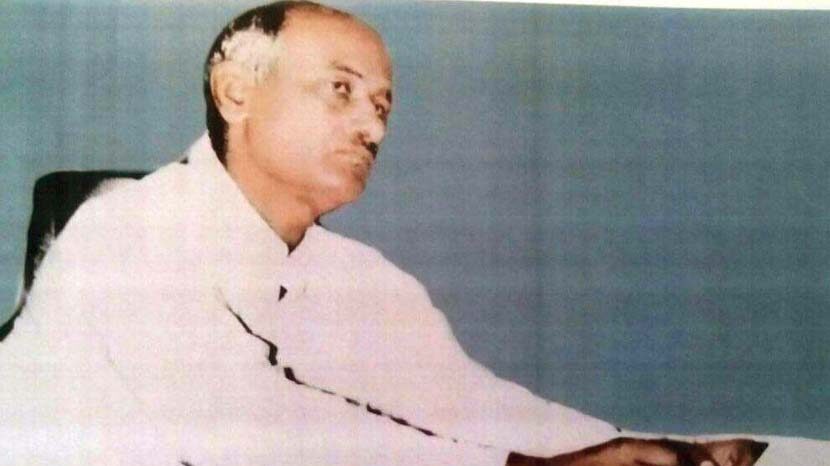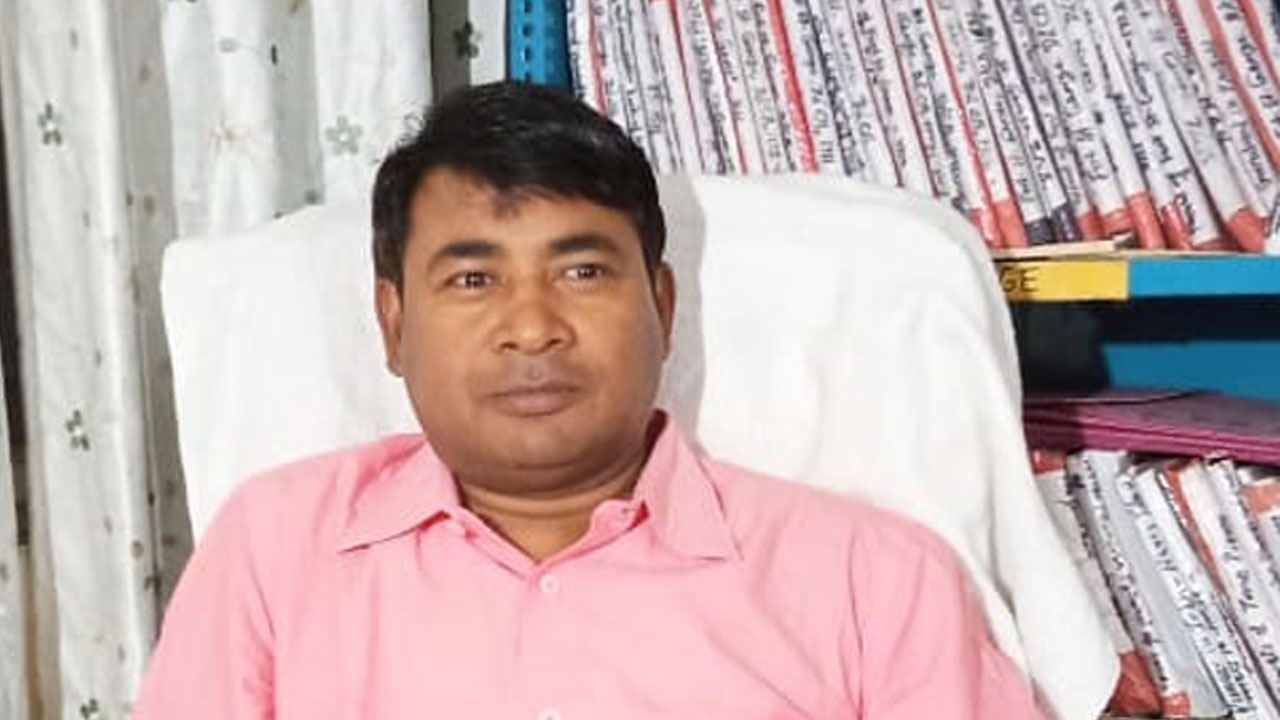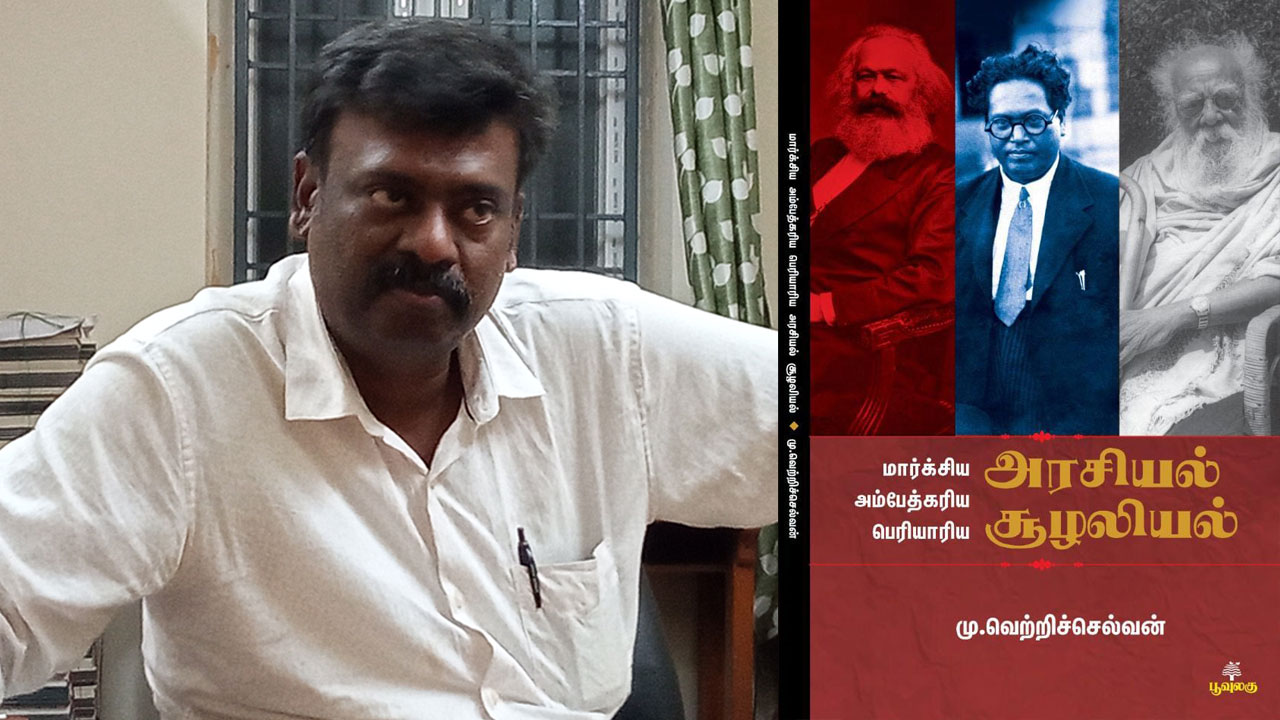Mahatma Phule, the great fighter for social justice in the British era, has pride of place among Indian social revolutionaries. It was due to his struggle against the atrocities perpetrated on the Shudras, Atishudras and women that after thousands of years, the condition of these sections improved and the British government promulgated new laws for their betterment. Jotirao realized that the caste system was the scourge of Indian society and that Brahmanism was at its root. Phule relentlessly struck at this root of the problem. Consequently, his name figures prominently in the history of the movement for societal transformation. Dr Ambedkar considered Phule his guru and made Phule’s social philosophy the foundation of his movement.
Jotirao Phule fought against Brahmanism and the priestly class to his last breath. His movement had in the crosshairs the numerous evil practices and wicked traditions of the Hindu religion that patronized and perpetuated Brahmanism. It was because of these practices and traditions that a majority of the people were deprived of education and other human rights for centuries.
The Brahmins established the Varna system to protect their vested interests. The victims of the system, who formed a majority of the Indians, kept protesting against it indirectly and directly. Another beneficiary of the Varna system was the ruling class. It did not enlarge the ambit of the privileges of the priestly class but it did not curtail the privileges either. The British rulers also followed the same policy. There are documents to show what all the British did to promote education among the Brahmins. The British rulers were not behind their predecessors in appeasing the Brahmins to secure their support. The British believed that the support of the Brahmins was crucial to the survival of their empire in India. The Charter Act of 1813 allocated Rs 1 lakh a year for promoting education. But a major part of the allocation was to be spent on the education of the Brahmins. In Banaras Sanskrit College, for around three decades after its establishment, from 1791 up to 1820-21, only students receiving scholarships were admitted. The colleges in Delhi, Agra and Pune also followed the same rule. And all those who were admitted were Brahmins. Following a public outcry, non-Brahmin students started being admitted to these institutions from 1820-21 onwards but the scholarship was awarded still only to the Brahmins. The decision to scrap this programme was taken in 1836 and it came into force from 1838. As a result, while there were 431 students in the Delhi College, of which 377 received scholarships, in the year 1833, the number fell to just 155 in 1840-41. After 1838, the British embarked on another programme, which they called “infiltration”. The plan was to provide education to the top class, that is the Brahmins, and the hope was that it would automatically trickle down to the lower classes. Clearly, the British rulers were divorced from the ground reality. Otherwise, they would have realized that the class which kept the lower classes deprived of the right and opportunity to acquire an education would never allow education to “infiltrate” deeper into society. As could be expected, the programme failed miserably.
Next, in 1854 came Wood’s Dispatch, following which the government took on the responsibility of educating the people. The Hunter Commission (1881) exposed how the government fared in discharging this responsibility. In his representations to the Commission, Jotirao explained how the Brahmin teachers and students came in the way of poor and lower caste students wanting to study.
Phule believed that lack of education, ignorance and superstitions were the biggest hurdles in the emancipation of Dalits and women. That was why the social movement that he helmed accorded the highest priority to education. He was a staunch advocate of educating everyone and especially Dalits, women and those from poor families. He started his first school for women at Bhidewadi in Pune on 1 January 1948. His wife Savitribai began teaching in this school and thus became the first Indian woman teacher. The couple opened another school in a Dalit settlement of the city on 15 May 1848. Children from poor and Dalit families were taught there. In 1855, Jotirao started a night school to teach men and women who worked during the day. Fatima Shaikh was educated in this school and went on to become a teacher in one of the schools run by the Phules. Fatima was the first Indian Muslim woman teacher. Jotirao also started a library to encourage more Dalits to get an education.
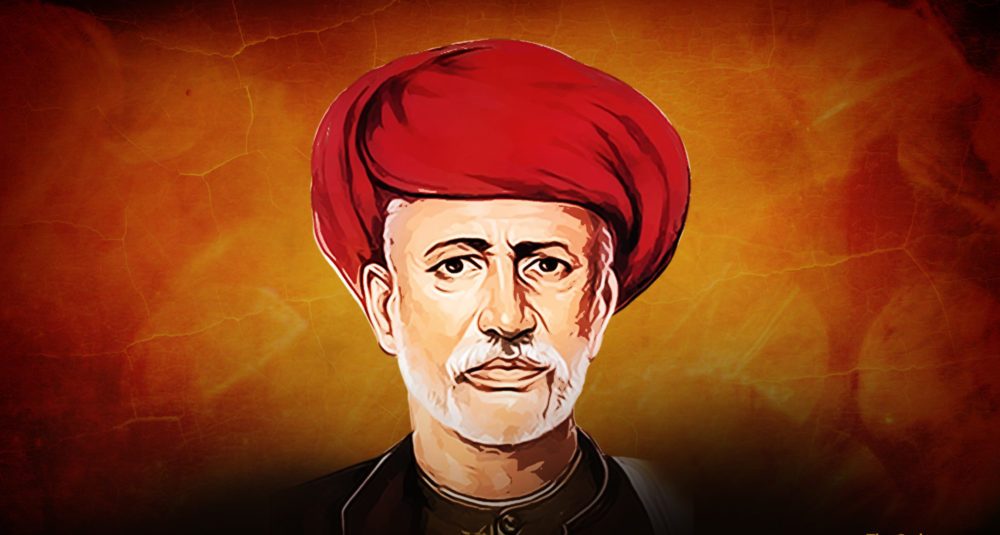
Jotirao was against using the services of Brahmin priests for religious rituals. He wrote two books explaining his stand. They were Purohiton Ka Pardafash (1867) and British Samrajya Mein Brahmani Vesh Mein Gulamgiri (1873). In the first book, Phule recounted how the priests were looting the people in the name of different rituals to be performed on birth, death and all occasions in between. In the second book he expounded on how the Brahmins had enslaved the Shudras and the Atishudras, taking advantage of their illiteracy and ignorance and their belief in superstitions. In 1872, he published a declaration along the same lines.
But Jotirao was not an armchair revolutionary. On 24 September 1873, he called a meeting of fellow activists and founded an organization called Satyashodhak Samaj to provide guidance to the movement. Later, branches of the Samaj were established at various places.
Jotirao Phule had two widows remarried without requisitioning the services of the priests – the first in December 1873 and second five months later, in May 1874. The Brahmins tried every means at their disposal to stop the marriages but they could not succeed. Next, Jotirao conducted the wedding of the son of a fellow activist without calling a Brahmin priest. The “affected” priest moved court. The sub-judge, who was a Brahmin himself, ruled in favour of the priest. Phule appealed in the district court, which overturned the lower court judgment. But the priest wasn’t ready to give up. He filed an appeal in the Bombay High Court, which, too, rejected his plea. After this, the Brahmins of Pune turned against Phule.
Another similar case also deserves mention. In 1878, a Pune resident used the services of a priest, who wasn’t his family priest, for his son’s wedding. The family priest filed a case in the court of Mahadev Govind Ranade, who was first class sub-judge in Pune. Besides the dakshina, the priest also sought damages. Ranade ruled in favour of the priest saying that the respondent had no right to overlook the priest. The district and the high courts, later, overturned this judgment. Had the courts not ruled thus, the long-term consequences would have been dangerous. The Bombay High Court was the third High Court in British-ruled India to declare as illegal the notion that traditional weddings could not be performed without a Brahmin priest. The then Bengal and
North-Western Provinces high courts had already rejected the view. Later, the Madras High Court, too, did the same, thus putting an end to this controversy. This was a major victory for Phule.
The British allowed the dakshina system prevalent in some states to continue, though they did try to regulate it. For instance, a cap of Rs 50,000 per year was put on the dakshina corpus. Some other steps were also taken due to which the number of Brahmins receiving dakshina began dwindling. One such step was the decision to pay Rs 20,000 per year to Pune University from the excess amount in the dakshina corpus. Most of the teachers and the students in the university were Brahmins. On another occasion, when Rs 3,000 remained in the corpus after all payouts, some reformist Brahmins wrote to the governor demanding that half of the amount each be awarded to Hindi and Marathi authors who produce original literature. However, the conservative Brahmins took offence and formed a committee to decide the punishment for the initiators of the idea. They also announced the day the meeting was to be held. When the conservatives refused to budge, the reformists met Jotirao Phule and sought his help. Phule arrived at the venue of the meeting with around 200 well-built young men from the nearby Dalit settlements. The Brahmins assembled there were taken aback. At the instance of Jotirao, they consented to the proposal. Subsequently, the governor allowed the excess amount to be spent for promoting literary writings.
Similarly, the Baroda State had a long tradition of distributing khichdi free to the Brahmins every day. A large sum of money from the state exchequer was spent on this largesse. In 1884, Phule wrote to the king of Baroda and then met him. He asked the ruler why the state should spend so much money on the Brahmins when the farmers in his state were living from hand to mouth despite their back-breaking labour? Soon the king wound up the practice.
During Phule’s times, almost all the landlords and moneylenders in the Pune district were Brahmins. The lower and the middle rungs of the government machinery were also dominated by the Brahmins. Consequently, the poor, the Dalits and the Backwards had no one and nowhere to turn to for justice. Against this backdrop, Phule wrote a book titled Kisan Ka Koda (1881), in which he recounted the problems of the peasantry, analysed their root cause and suggested how they could be resolved.
To end the exploitation of the poor at the hands of the government employees, Phule, in his book, demanded that the proportion of the Brahmins in government employ should not be more than their proportion in the population; in their place, young competent men from the Shudra and Atishudra communities should be appointed. To free the Shudras from the stranglehold of the priests, he suggested that primary education be made compulsory.
Phule’s suggestions for the welfare of the Shudras, Atishudras and farmers are being implemented now. They include damming rivers, government assistance to farmers for digging wells, holding exhibitions to sell artisanal products, importing high-yielding varieties of milch cattle and promoting the use of modern and scientific means in farming.
In 1844, Phule organized the country’s first Kisan Satyagraha in the Junnar Tehsil of Pune district to protest the atrocities against the farmers. It continued for a year and ended only after the representatives of the landlords, moneylenders and the government visited the protest venue to meet Phule and they worked out a compromise.
The lack of access to water has been one of key issues for the Dalits. Since they were not landowners they had no access to water. Water was always a scarce commodity for them. From 1860 to 1868, Phule opened up the tank he had built in his house to the public.
Phule regularly visited Dalit settlements to arouse consciousness among them and to build a Dalit leadership. He was one of the progenitors of the Indian trade union movement. Whenever he was in Bombay, he would visit localities populated by workers. Narayanrao Lokhande, who founded India’s first organization of workers, “Bombay Mill Hands”, in 1880, was a follower of Phule and one of the leading members of the Satyashodhak Samaj. Jotirao was the moving spirit behind the successful strike by the Dalit labourers of Bombay and Alibaug municipalities in 1889.
Those who are trying to appropriate Shivaji Maharaj today would do well to remember that it was Jotirao Phule who travelled to Raigarh and discovered Shivaji Maharaj’s samadhi, buried under stones and leaves, and got it repaired. He also wrote a powada in honour of Shivaji Maharaj.
The Smiritis and the Puranas condemn Shudras and women to a life of slavery. Their life is meant to be controlled by others. Today, such beliefs and practices have left their imprint on all religions in India. Untouchability, Devdasi and Sati systems, child marriage, female infanticide, unpaid labour and ban on widow marriage are among the inhuman religious practices that are still prevalent in many parts of India. And it is the priestly class that is sustaining them. Sati was outlawed during Phule’s lifetime and remarriages of widows were taking place in some regions. But that did not bring about any significant change in the socio-educational-economic status of the women. Phule gave complete support to the Widow Remarriage Movement, launched by Vishnu Shastri Pandit. He also opposed child marriage and polygamy. His book Satsar throws light on the condition of women in Indian society.
Two incidents show Phule’s convictions. Once, Mahadev Govind Ranade, who was a judge in Pune, told Phule that he had a sister who was a child widow. Phule was pained to hear this and asked Ranade why he did not marry her off. Ranade had no answer and he just mumbled something. Phule was angry. He said, “Rao Saheb, it would be better if you do not call yourself a social reformer in the future.” Jotirao also chastised Ranade, when, after the death of his wife, he, at 30 years of age, married an 11-year-old girl.
It is difficult to think of another person who fought so hard and so consistently against Brahmanism for the sake of the dignity and the rights of the Shudras, Atishudras and women. Even today, when the inequality spawned by capitalism and globalization has made life so difficult for the poor, the Dalits and the Adivasis, Phule’s convictions continue to guide the Indian Dalit and feminist movements.
(This article is part of Sujata Parmita’s unpublished compilation Manse Ki Jaat. It has been published here with the permission of the late author’s daughter.)
(Translation: Amrish Herdenia; copy-editing: Anil)
Forward Press also publishes books on Bahujan issues. Forward Press Books sheds light on the widespread problems as well as the finer aspects of Bahujan (Dalit, OBC, Adivasi, Nomadic, Pasmanda) society, culture, literature and politics. Contact us for a list of FP Books’ titles and to order. Mobile: +917827427311, Email: info@forwardmagazine.in)
The titles from Forward Press Books are also available on Kindle and these e-books cost less than their print versions. Browse and buy:
The Case for Bahujan Literature
Dalit Panthers: An Authoritative History
